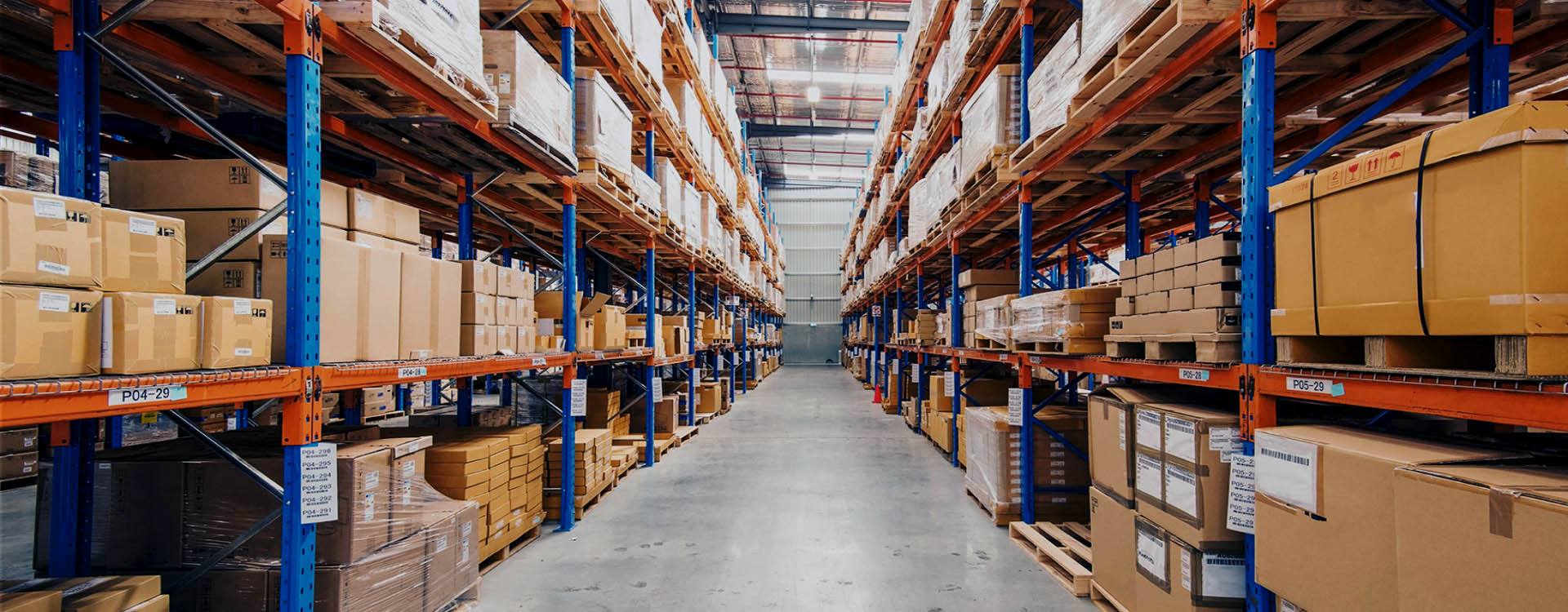When establishing, relocating, or integrating warehouses, racks are always required. Racks are used to store goods, but it is important to choose the right racks and storage systems in consideration of the product load and the warehouse space layout. In this article, we will introduce various types of racks that have been selected as general racks, and how to select them according to the warehouse.

Stack Racks (Nesting Racks or Tier Racks)
What kind of warehouse is the stack rack recommended for?
Ideal for warehouses where the items to be stored have similar or the same packaging. Nesting racks can be stacked and stored compactly when not in use, so it is also recommended when the usage space of the warehouse changes due to busy seasons or off-seasons. In addition, since it does not require complicated construction, it is most often used for a short period of time or when using a rental warehouse.
About the types of nesting stack racks
You can mainly choose from two types of nesting racks: “reverse nesting rack (reverse nesting)” and “positive nesting rack (positive nesting)”. Neither is just upside down. As the assembly method and usage scene will change, you can choose according to the layout and storage method of the warehouse.
Reverse stack rack
By placing the pallets on the floor, one rack can store two pallets of luggage.
Recommended when you want to increase the storage capacity in a warehouse with a low ceiling.
Positive nesting rack (positiveness)
If you can’t put the pallet on the floor, use positiveness.
Stable storage is possible because the luggage is loaded underneath.
Since the fork can be inserted under the rack and lifted together with the rack, it is not necessary to unload the product, and it is recommended to use it in a warehouse where the layout changes frequently.
Pallet Lift Modules (Heavy Rack)
Also called a heavy rack, it is a storage rack commonly used when storing luggage on pallets.
Differences between pallet racks and nesting racks
Both pallet racks and nesting racks are intended to be used as a set with pallets. The pallet rack has a better load capacity than the nesting rack, but since it is a fixed rack, installation work is required. Also, it is not suitable for warehouses whose layout changes frequently because it cannot be stacked and stored when not in use, such as nesting racks.
Advantages of pallet racks over nesting racks
The advantages of pallet racks over nesting racks are not only load capacity but also freedom of storage. Nesting racks act as shelves when stacked, but they are all evenly spaced. In the case of pallet racks, the height of the spacing can be adjusted freely, so it can be adjusted to the size of the package depending on the stage.
What kind of warehouse is the pallet module carousel recommended for?
Nesting racks have height restrictions, while pallet racks can be set at any height, so pallet racks are more suitable when considering maximum space utilization in warehouses with high ceilings. Set the height of the rack to the height that your forklift can reach. Please note that installation work is required for construction, so if the warehouse is rented, permission from the administrator and restoration work when moving out may be required.
Medium Weight Carousels / Medium-Light Racks
Next, we would like to introduce “medium-weight racks and medium-light racks” that are used as warehouse shelves and storage shelves. It is widely used not only in distribution warehouses and factories, but also in libraries, hospitals, and research facilities.
About the difference from the pallet rack
As the name implies, pallet racks are racks for storing things in pallet units. Medium-weight racks and light-weight racks are suitable for storing, storing, and organizing product units in cardboard boxes and containers. In addition, pallet racks take time to install and assemble, but many medium-weight and light-weight racks are boltless and can be easily assembled with a single hammer.
What are the recommended points for medium-weight racks and medium-light racks?
It is used for storing products in units of products in warehouses and facilities, and is often used as a product storage shelf for manual picking. In addition, the spacing between the shelves can be easily adjusted, so storage efficiency and work efficiency are not impaired. In addition, medium-weight racks are mainly 300 kg to / 500 kg / stage, and medium- and light-weight racks are 200 kg / stage, which is the general load capacity per stage, and it is used properly according to the weight of the stored items.
Carousel Rack for Other Uses
Drive-In Rack
[Storage method] First-in, first-out
[Luggage] For mass production and small variety lots
Since there is a depth of the rack, a forklift can be put in the rack. Therefore, the aisle area is designed to be small, and the efficiency of the warehouse space can be improved.
Pushback rack
[Storage method] First-in, first-out
[Luggage] Large lot warehousing / large lot shipping
The luggage is taken out by the pushing method using gravity. Suitable for warehouses that store luggage with short lead times.
A rack for storing tires. It is used to store and store unused tires and off-season tires.
Bar rack
Also known as a long storage shelf. Suitable for storing long items such as pipes and rods. The pitch of the steps can also be adjusted. The bitch of the step is also adjustable, and each bar has a load capacity of about 500 kg. The single-sided type is selected for installation near the wall, and the double-sided type is selected for mass storage. There is plenty of free space between the bars, so you can easily handle cargo with a forklift.